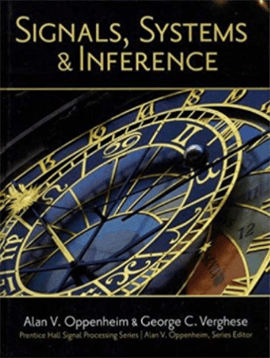In this section, Professor Verghese describes the unique role 6.011 Signals, Systems and Inference plays in the MIT Electrical Engineering and Computer Science (EECS) curriculum.
6.011 Signals, Systems and Inference originated in the desire to have a single subject (…) that would allow students to study ideas, methods and tools that are common in and at the intersection of control, signal processing, and communication, including the study of stochastic signals.
— George Verghese
It is typically the case in engineering curricula (and especially electrical engineering) that students who have taken a foundational course in signals and systems, perhaps in their sophomore or junior year, will then go on to specialized senior subjects in feedback control and/or in signal processing. If they have also taken a class in probability by this time, then they are ready to tackle a senior subject in modern communication theory. However, the usual undergraduate curriculum will typically not have room for them to take courses in all three (control, signal processing, and communication), or perhaps even two.

Cover of Oppenheim and Verghese’s (2015) book, Signals, Systems & Inference.
6.011 Signals, Systems and Inference originated in the desire to have a single subject—with signals/systems and probability as its two prerequisite courses—that would allow students to study ideas, methods and tools that are common in and at the intersection of control, signal processing, and communication, including the study of stochastic signals. This course would prepare students for more specialized follow-on introductory graduate subjects. The imperative for such a subject arose when the EECS department put in place a 5-year Masters of Engineering degree as its flagship program, with an associated thesis. The subject was developed by Professor Alan Oppenheim and myself, and has been primarily lectured by one of us over the 25 years since it was launched.
The distinctive cut through material that is usually taught in upper-level undergraduate subjects—but typically not in a single subject—necessitated course notes written quite specifically for this subject, and adapted as the subject evolved. The recent book, Signals, Systems and Inference, authored by Professor Oppenheim and myself (published by Pearson in both a hardcover North American edition and a later softcover Global edition), grew out of these notes and now provides the text around which the subject is taught. The book has more material than can reasonably be taught in a semester, but this allows the instructor some flexibility in unfolding the story during the term. Students have generally found the text very accessible and helpful to their learning. Having the text has also liberated us to focus lectures on key ideas and to make the occasional excursion into particular applications of interest.
